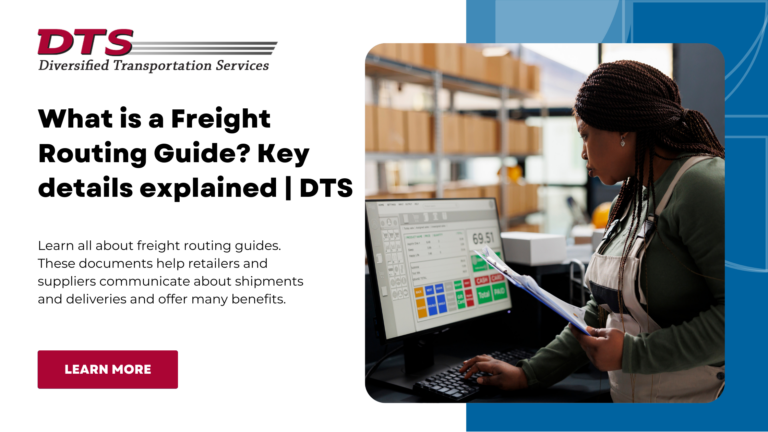What is a freight routing guide? Key details explained
Freight routing guides help retailers set clear shipping guidelines for their suppliers and vendors.
Shipping goods to retailers can be a complex process, especially when dealing with multiple organizations across different locations. You have plenty of factors to consider, from delivering goods on time to keeping them secure en route.
What does a freight routing guide contain? And why do retailers use them? We’ll answer these and other questions below.
What is a freight routing guide?
A freight routing guide is a document retailers create for the suppliers and vendors they have contracts with. These guides explain the retailer’s rules and requirements for shipping goods to their stores. These are common for larger retailers, like big box stores. However, a retailer of any size can create a shipping routing guide.
All suppliers and vendors working with a retailer are expected to follow their shipping routing guides to the letter.
Why do retailers use routing guides?
Retailers use freight routing guides for a number of reasons. These include:
- Creates consistency: Routing guides help retailers set up a uniform, consistent supply chain and ensure all shipments follow the same general process and methods. This means retailers can better plan their incoming deliveries.
- Facilitates preparation: Issues may arise that disrupt the shipping process from time to time. With a shipping routing guide, retailers establish rules and plans for handling unexpected delays or changes.
- Centralizes information: Routing guides are a central location for all information about the shipping process, helping reduce the risk of confusion and oversights.
- Facilitates easier communication: Routing guides allow for simpler, clearer communication between retailers and companies shipping their goods to stores. They help keep all parties on the same page.
- Simplifies queries: A retailer’s routing guide is a single point of contact for any queries related to shipping. If suppliers and vendors have questions or concerns, they can check the routing guide first before contacting the retailer. That helps everyone save time.
- Encourages accountability: Accountability is vital for carriers transporting goods between suppliers/vendors and retailers. A shipping routing guide specifies how products should be handled, and carriers can be held accountable if they fail to meet the standards expected.
What are the main components of a freight routing guide?
The contents of a freight routing guide vary from one retail organization to another, depending on their size. However, routing guides generally include:
- Shipping routes and requirements: Routing guides should provide information on the preferred shipping routes and transport requirements. These rules are based on shipment size and origin.
- Labeling instructions: Proper labeling is critical for shipping to retailers. It allows goods to be cleared through customs (when necessary) and handled correctly when they reach stores. Labeling instructions include barcodes, shipping labels, and contents labels. Without these, goods may be sent to the wrong locations and cause delays.
- Delivery requirements and documentation: Certain documentation is required when shipping to retailers. A shipping routing guide should include details on key requirements, such as proof of delivery or the Bill of Lading (which includes essential information like the type of products shipped).
- Packing requirements: Retailers will specify how they want items packed before shipping. Suppliers and vendors must follow these rules to ensure goods reach retailers in the best possible condition. All deliveries should arrive in uniform packing, whether cardboard boxes, crates, plastic containers, or anything else.
- Possible penalties: Penalties may be imposed when companies don’t follow routing guides. Overlooking requirements and standards, whether by accident or design, can cause disruptions that cost retailers money and time.
- Timing: Routing guides may specify the days and times when goods should be loaded and unloaded.
- Communication guidance: Communication methods between retailers, suppliers, and vendors are typically addressed in routing guides.
Work with an experienced shipping logistics company to navigate routing guides
For any business, being able to supply goods to retail stores is a major achievement. Building a strong relationship with those retailers is critical, and routing guides can help you do just that.
However, navigating complicated routing guides from big-box stores can be challenging. There’s a lot to consider and follow for a smooth process. However, working with a shipping logistics company with retail experience can help make it all easier.
DTS is a shipping logistics company with more than 30 years of experience. We help businesses of all sizes find the most cost-effective, reliable transportation solutions. To learn more about how we can help you, get in touch with our professionals today.
